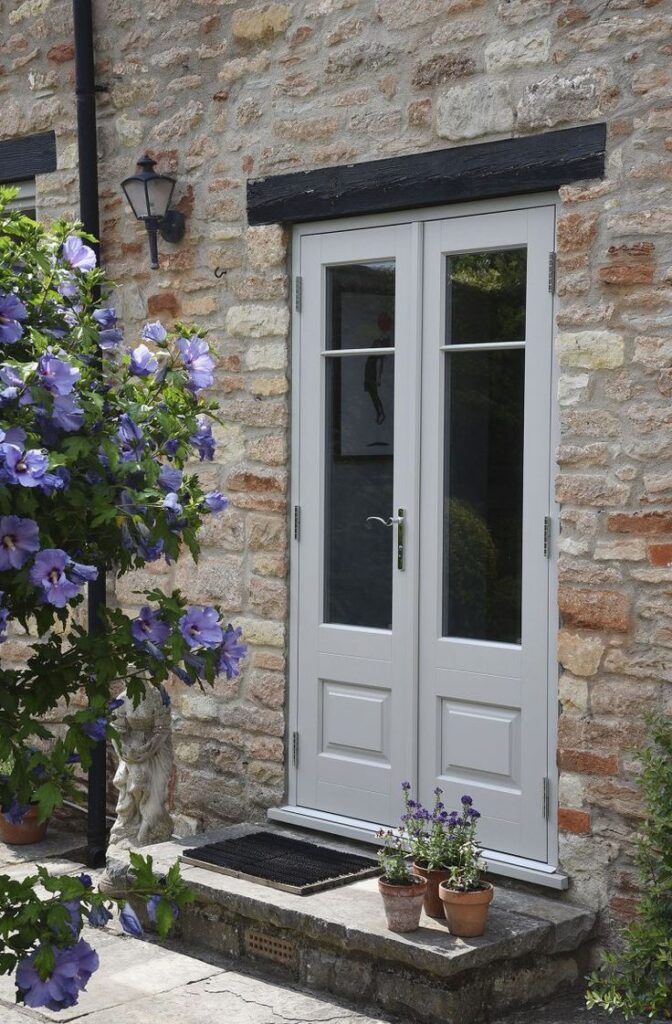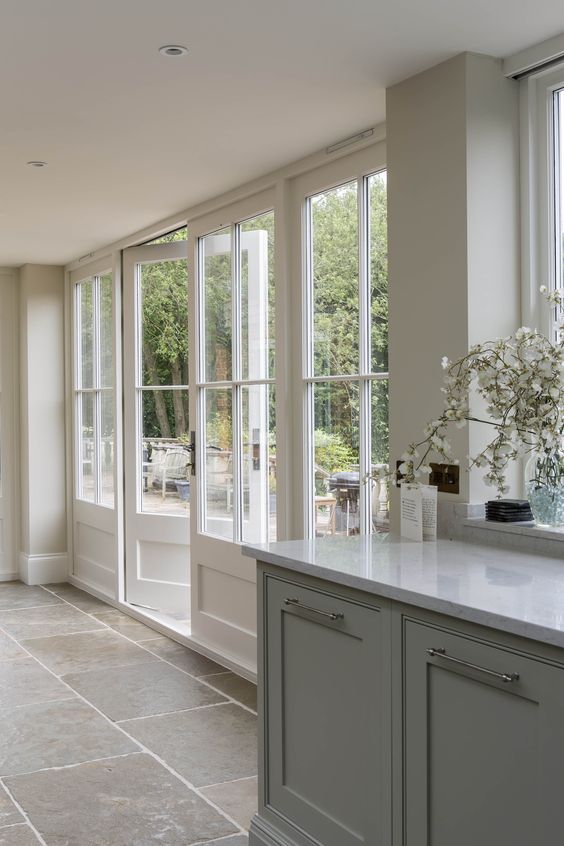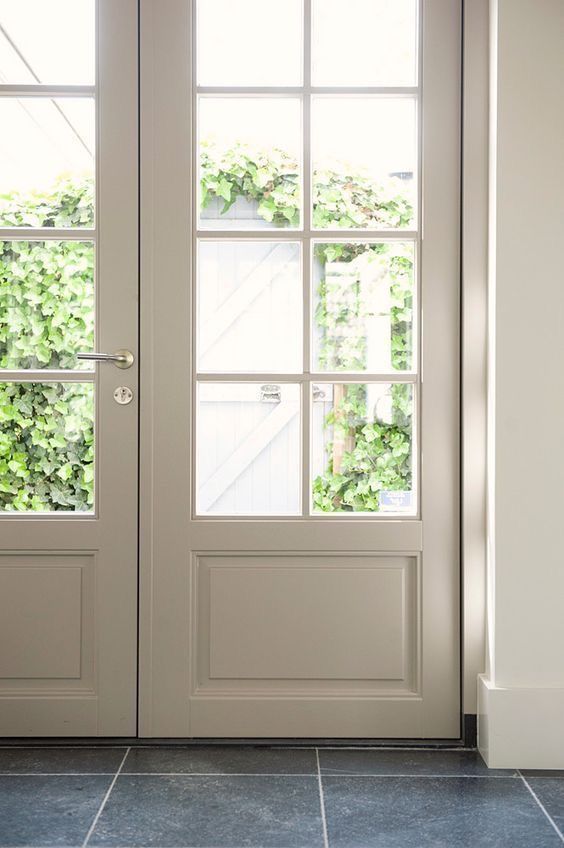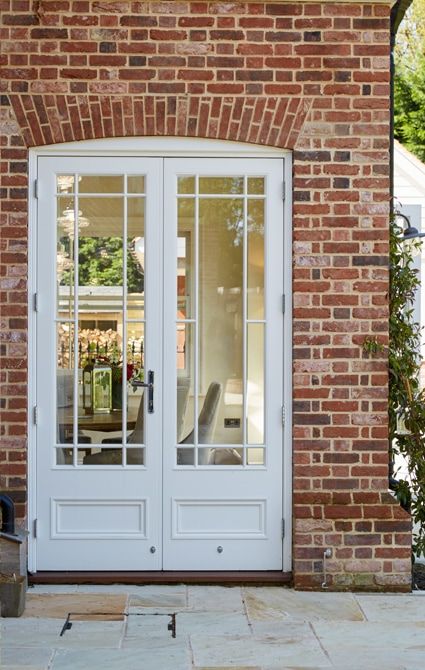Timeless and elegant, French doors add a touch of sophistication to any home. They combine the security and functionality of a door with the transparency and beauty of a window. A popular choice for patio doors across locations and generations, French doors let in natural light, elevate indoor living spaces, and create a sense of connection with the outdoors.
French doors, both internal and external, are a favourite in many traditional architectural styles, from Victorian and Georgian period properties to Mediterranean flats and rural farmhouses. But the wide variety of modern designs, finishes, and materials now available makes these versatile doors a natural fit for just about every home.
At WoodBeeLtd, we excel at providing beautifully crafted and expertly installed French patio doors. We will work with you to understand your budget, lifestyle, and design goals to match you with the perfect French doors.
Whether you want traditional grey French doors in timber or contemporary French door sets in pine, WoodBeeLtdcan help you make it happen by helping you choose the ideal style for your property and aesthetic preferences.
Table of Contents
Benefits of French Doors
With their dual-panelled design and plentiful glass panes, French patio doors offer the following benefits:
Natural Light
Perhaps more than any other feature, people value French doors for their ability to let in ample amounts of natural light. Not only does this make your living spaces brighter and airier, but it can also transform the feel of a room.
With quality materials and expert construction, modern French doors allow you to maximise light without sacrificing energy efficiency. In some cases, French doors that are external may even help you lower your heating bill by naturally warming you and your home during the day. In warmer months, you can open both panels completely for improved ventilation.
Aesthetic Appeal
The beauty of French doors for exterior or interior use is timeless and placeless, as they are equally at home in an urban Parisian flat as a beach house on the English coast. Their versatile aesthetic appeal allows you to enhance, maintain, or create the look you want — whatever that look may be. We know you will love the results as much as we do.
Above all else, French doors are defined by their windows. You can select French doors with side windows that feature unobstructed glass to frame an outdoor landscape or opt for intricate glass patterns that draw attention to themselves.
While white French doors are undoubtedly the most common, black French doors offer a dramatic contrast that draws attention to the beautiful scenery outside.
Indoor-Outdoor Flow
When most people imagine a patio door, they picture a French door. That’s because of their unparalleled ability to blend the indoors and the outdoors.
When fully open, two-panelled French doors create a wide space to pass unencumbered between your indoor living spaces and your patio, garden, or porch. You can sit or work inside while feeling the fresh air and listening to the sounds of nature.
Even when closed, the abundant glass panels of a French door invite the sights and light of the outdoors into your home for a charming effect.
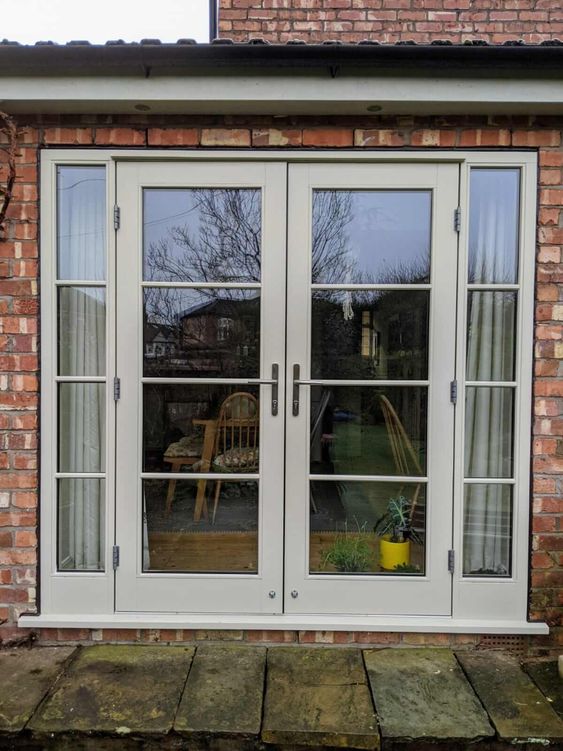
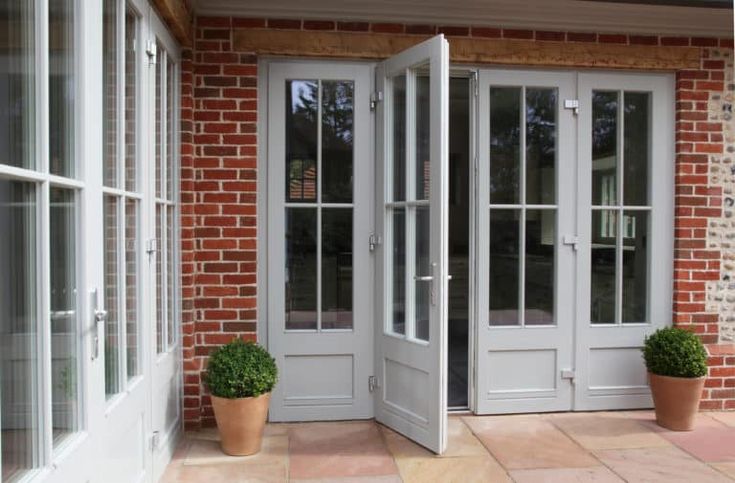
Energy Efficiency Features
Glass isn’t exactly famous for its outstanding energy efficiency. Thankfully, you have options to make your French doors easier on the environment and your wallet.
Double Glazing
A single pane of glass is no match for the heat or cold. When you increase the number of panes, however, you bump up the window’s insulation properties.
Double (or even triple) glazing involves adding one or two panes of glass — with air or dense argon gas between them — to your French doors, which reduces heat transfer. Double-glazed French doors also boost the safety of your doors, as two panes of glass are more challenging to break through. Still, single glazing is suitable for French doors in the interior of your home.
Thermal Break Technology
Conductive materials like metal transfer heat more readily than wood. External wooden French doors do a better job keeping heat inside during the winter and cool air inside during the summer. Wood is not conductive, meaning it prevents heat transfer. This thermal break boosts the overall energy efficiency of your doors or windows.
Weather Stripping
While not a modern technology, weatherstripping can greatly improve the energy efficiency of your doors. Weatherstripping works by creating a physical barrier around the movable edges of your French doors to reduce air loss when closed.
Weatherstripping is one of the simplest and most inexpensive ways to increase your home’s energy efficiency. It can also cut down on noise, prevent moisture from entering, and improve indoor air quality.
Door Energy Ratings (DERs)
A DER of A indicates the highest efficiency, while a rating of C represents the minimum energy rating needed to comply with UK Building Regulations as of June 2022.
Materials for French Doors
French door manufacturers utilise several materials with different lifespans, price points, and maintenance requirements. Wooden French doors remain the most popular choice for the classic look, durability, and energy efficiency. You can choose the type of wood that best suits your interior design style and exterior architecture.
Timber and Pine
Wood is the traditional material used for French doors, giving the style its classic look. It is the most customisable of all door materials, offering a broad choice of stains, paints, and other finishes. You also have a choice when it comes to the kind of timber you want, from softwoods like pine to hardwoods like oak.
While timber French doors are classic and versatile, they also require more maintenance than other materials. As a natural product, wood changes in response to heat, cold, humidity, and other elements. You must watch out for wear and tear, repairing and refinishing your doors as required. If you choose to stain your wood doors, we recommend restaining them every two to three years to protect the wood and keep them looking beautiful.
Even considering the occasional maintenance and painting or staining, natural wood French doors come out ahead compared to composite French doors. Wood offers a classic and rustic style that suits nearly any home, and you can customise the stain shade or paint colour to your interior design. French doors made from wood also offer excellent energy efficiency.
If you have questions about whether timber or pine is best for your exterior or interior French doors, contact us for a consultation.
Styles and Designs
You can choose from several designs and configurations when selecting a French door, including the following:
Single vs. Double Doors
The classic French door features a double-panel design with two working doors. Double French doors maximise the light that enters when the doors are closed and the size of the opening when the doors are open.
However, you may also choose a two-panelled configuration with only one operable side. If you’re tight on floor space, this gives you the look of a traditional French door but only requires room for one swinging door. A third option is the single-panelled French door. This occupies less room on your wall to work well in smaller living spaces.
Patterns Bars
Since French doors are all about the glass, this is where you can truly express your style. If you prefer a streamlined look or have an exceptional view you want to highlight, you may choose a single large pane of glass on each door. On the other hand, a variety of patterns bars can help you match your French door to your existing architectural style.
You could go traditional, with six to 15 vertical panes on each door. Alternatively, you could choose a modern look with five horizontal panes on each panel. Or you could opt for half-lite French doors, which have window panes on top and a solid panel on the bottom. You can even consider stained glass to increase privacy or add a pop of colour.“Please review our options section; it covers a wide range of choices commonly used in houses.”
